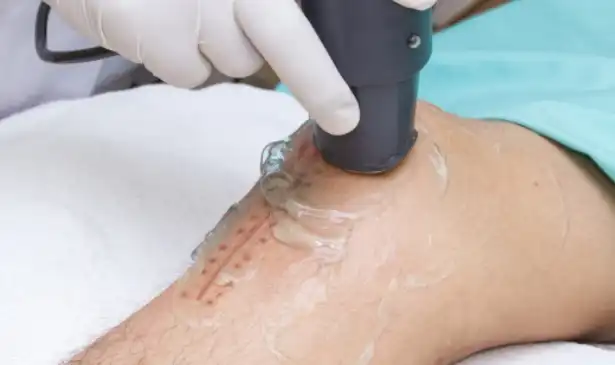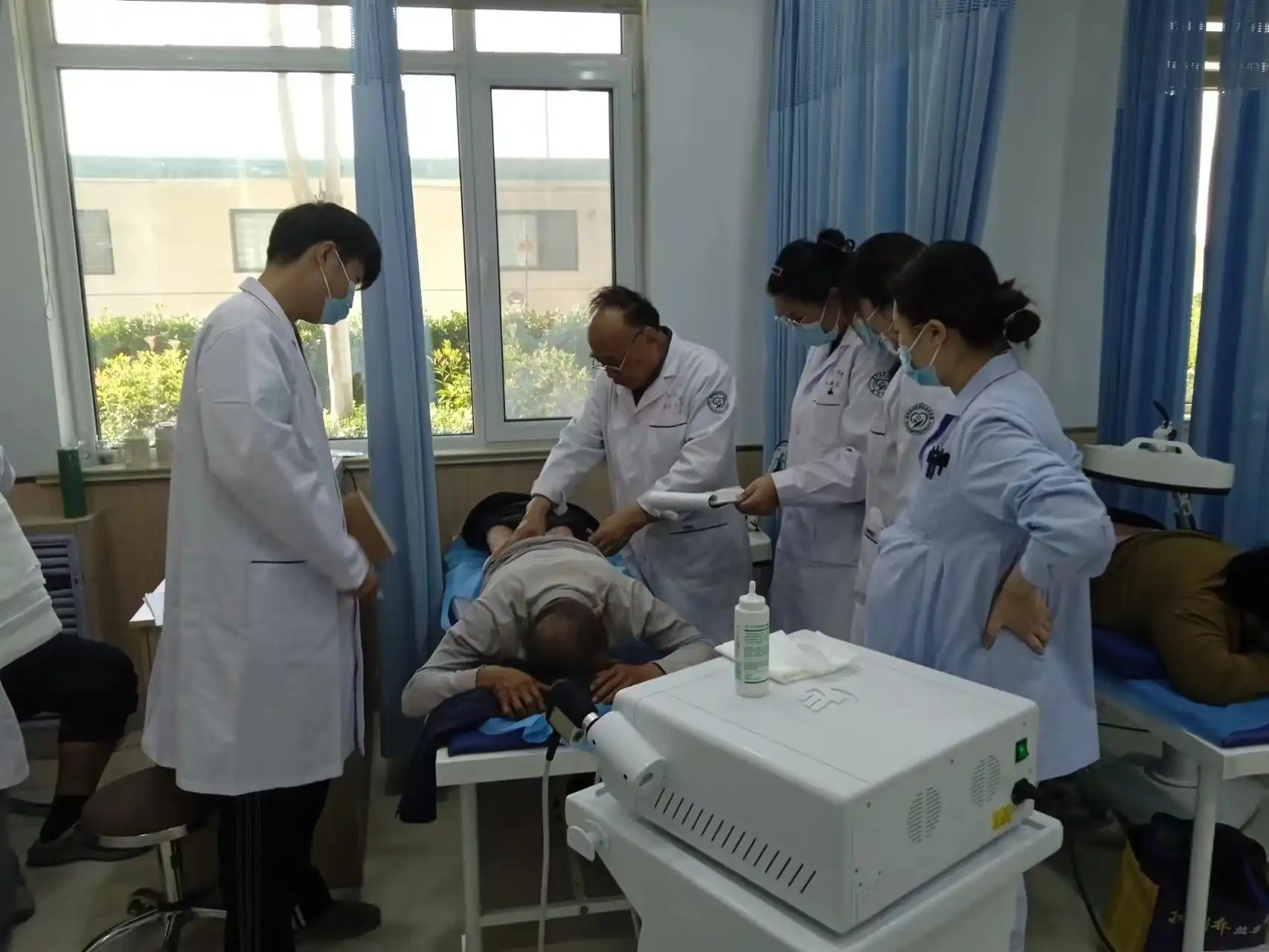Is a TENS Machine the Same as Shockwave Therapy?
In the realm of pain management and musculoskeletal treatment, two modalities that often come under scrutiny are the use of a TENS (Transcutaneous Electrical Nerve Stimulation) machine and shockwave therapy, with the latter being closely associated with the shockwave therapy machine. Many patients and even some healthcare providers may wonder if these two are similar or if they can be used interchangeably. In this comprehensive blog post, we will delve deep into the characteristics, mechanisms, applications, and differences between a TENS machine and shockwave therapy, with a particular focus on the Eswt shockwave therapy machine.
Unraveling the Mysteries of TENS Machines
How TENS Machines Function
A TENS machine is a compact and portable device that has become a staple in pain management. It operates by delivering electrical impulses through electrodes that are affixed to the skin's surface. These electrodes are connected to the main TENS unit via wires. Once activated, the machine sends electrical currents with variable frequencies, amplitudes, and pulse widths. These electrical signals travel through the skin and interact with the underlying nerves.
The exact way in which TENS alleviates pain is a subject of ongoing research, but two main theories dominate. The gate - control theory posits that the electrical stimulation from the TENS machine activates nerve fibers in such a way that it "closes the gate" to pain signals. By overwhelming the pain - transmitting nerve pathways with electrical impulses, the brain receives fewer pain messages, resulting in a diminished perception of pain. Another theory suggests that TENS may trigger the release of endorphins, the body's natural pain - relieving chemicals. This endorphin release can further contribute to the reduction of pain sensations.
Applications of TENS Machines
TENS machines find their utility in a wide range of pain - related conditions. They are commonly used for both acute and chronic pain management. For instance, individuals suffering from back pain, whether it's due to a sudden injury or a long - standing issue, often turn to TENS machines for relief. Neck pain, which can be caused by factors such as poor posture or muscle strain, also responds well to TENS treatment. Arthritis patients may use a TENS machine to manage the pain associated with joint inflammation. Additionally, those recovering from surgical procedures can employ TENS to ease post - operative pain. TENS machines are also effective in treating muscle spasms. By stimulating the nerves around the affected muscle, they can help relax the muscle, reducing the frequency and intensity of spasms.
The Intricate World of Shockwave Therapy and the shockwave therapy machine
The Inner Workings of the shockwave therapy machine
The shockwave therapy machine is a far more complex and sophisticated piece of medical equipment compared to a TENS machine. This machine is designed to generate high - energy shockwaves, which are essentially acoustic waves that can travel through the body's tissues. There are three primary methods by which Eswt shockwave therapy machines operate: electrohydraulic, electromagnetic, and piezoelectric.
In electrohydraulic - based shockwave therapy machine, an electrical spark is created underwater. This spark generates a shockwave, which is then focused and directed towards the targeted treatment area using a reflector. Electromagnetic shockwave therapy machine utilize an electromagnetic coil. When an electrical current passes through this coil, it creates a magnetic field. This magnetic field interacts with a metal membrane, causing it to vibrate. These vibrations generate shockwaves that are then transmitted to the patient's body. Piezoelectric shockwave therapy machine rely on piezoelectric crystals. When an electrical voltage is applied to these crystals, they rapidly expand and contract, generating shockwaves.
Once the shockwaves are produced by the shockwave therapy machine, they travel through the skin and penetrate deep into the underlying tissues. As they traverse the body, they initiate a series of mechanical and biological responses. The shockwaves cause micro - traumas in the tissue, which act as a trigger for the body's natural healing mechanisms.
Applications of Shockwave Therapy
Shockwave therapy, facilitated by the shockwave therapy machine, has a diverse range of applications, particularly in the field of musculoskeletal medicine. One of the most common uses is in the treatment of plantar fasciitis, a prevalent cause of heel pain. The shockwaves emitted by the shockwave therapy machine break down the abnormal collagen fibers in the plantar fascia. This breakdown stimulates the growth of new, healthy tissue, leading to a reduction in pain and improved foot function.
Tennis elbow, medically known as lateral epicondylitis, is another condition that responds well to shockwave therapy. The shockwave therapy machine targets the damaged tendon tissue in the elbow. By creating micro - traumas in the tendon, it promotes the release of growth factors and the stimulation of blood flow to the area. This, in turn, accelerates the healing process and reduces pain and inflammation.
Shockwave therapy machine are also employed in the treatment of non - union fractures, where a bone fails to heal properly after a break. By delivering shockwaves directly to the fracture site, the machine stimulates the bone - healing process. It encourages the growth of new bone tissue and increases the likelihood of successful fracture union. Additionally, shockwave therapy has shown promise in treating various soft - tissue injuries, such as tendonitis and bursitis.
A Comparative Analysis: TENS Machines vs. Shockwave Therapy
Disparities in Treatment Mechanisms
The most fundamental difference between a TENS machine and shockwave therapy using an Eswt shockwave therapy machine lies in their treatment mechanisms. A TENS machine focuses on modulating nerve signals. It uses electrical impulses to either block pain signals from reaching the brain or to stimulate the release of endorphins, thereby reducing the perception of pain. In contrast, shockwave therapy, with the aid of the shockwave therapy machine, works at a tissue level. The high - energy shockwaves create micro - traumas in the tissue, which trigger a cascade of biological events. These events include the release of growth factors, the stimulation of blood flow, and the activation of cells involved in tissue repair.
Variances in Treatment Depth
TENS machines have a relatively shallow reach. The electrical impulses they deliver penetrate only a few millimeters into the body. They primarily target the peripheral nerves that are close to the skin's surface. This makes TENS suitable for conditions where the pain source is relatively superficial, such as minor muscle strains or nerve irritation near the skin.
On the other hand, the shockwaves generated by an Eswt shockwave therapy machine can penetrate much deeper into the body. They can reach structures such as tendons, ligaments, and even bones. Depending on the settings of the machine and the type of shockwaves used, they can effectively treat conditions that involve deeper - seated tissues. For example, in the case of a deep - seated tendon injury or a non - union fracture in the bone, the shockwaves from the shockwave therapy machine can directly impact the affected area, promoting healing.
Efficacy for Different Conditions
TENS machines are primarily used for pain management. They are effective in providing short - term relief from a variety of pain conditions. However, they do not actively promote tissue repair. They merely address the symptom of pain by interfering with the nerve signals related to pain perception.
Shockwave therapy, with the shockwave therapy machine, is more focused on tissue regeneration and repair. While it can also provide pain relief, especially as a result of the healing process, its main strength lies in treating conditions that require the restoration of damaged tissues. Conditions like tendon injuries, non - union fractures, and chronic inflammatory conditions of the musculoskeletal system respond well to shockwave therapy.
Equipment and Treatment Experience
A TENS machine is a small, portable device that can be easily used at home by patients under the guidance of a healthcare provider. The treatment experience with a TENS machine typically involves a tingling or buzzing sensation on the skin where the electrodes are placed. The intensity of this sensation can be adjusted according to the patient's comfort level.
In contrast, an shockwave therapy machine is a larger, more complex piece of equipment. It requires a trained medical professional to operate it, and the treatment is usually carried out in a clinical setting. During shockwave therapy, patients may experience a sensation of pressure or a tapping feeling as the shockwaves are delivered. At higher intensities, the treatment can be somewhat uncomfortable, but this is often tolerated well considering the potential benefits.

Shaanxi Miaokang Medical Technology Co., Ltd had R&d and produce Eswt shockwave therapy machine
is a comprehensive integrator engaged in medical instrument research and development, sales, medical technology research and promotion, and investment in medical institutions. The main research and development of medical ozone therapy equipment, extracorporeal shock wave therapy equipment and other products.
If you had any questions,feel free to contact us:Cathy@miaokang.ltd
Conclusion
In conclusion, it is clear that a TENS machine and shockwave therapy using an shockwave therapy machine are two distinct treatment modalities. They differ in their underlying mechanisms, the depth of treatment, their efficacy for different conditions, and the overall treatment experience. While TENS machines are valuable for pain management, especially for more superficial pain, shockwave therapy, facilitated by the shockwave therapy machine, is a powerful tool for promoting tissue repair and treating deeper - seated musculoskeletal conditions. If you are considering either of these treatments for your pain or musculoskeletal issues, it is essential to consult with a qualified healthcare provider. They can assess your condition, recommend the most appropriate treatment option, and guide you through the treatment process to ensure the best possible outcome.






